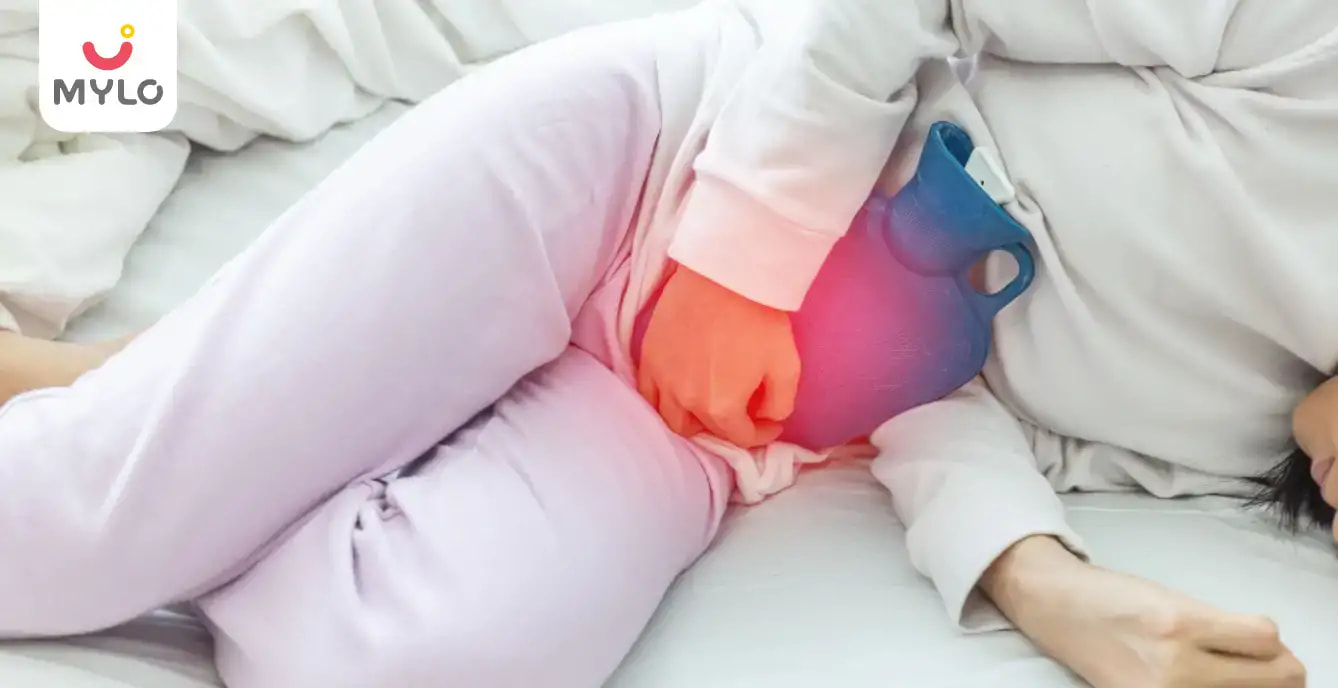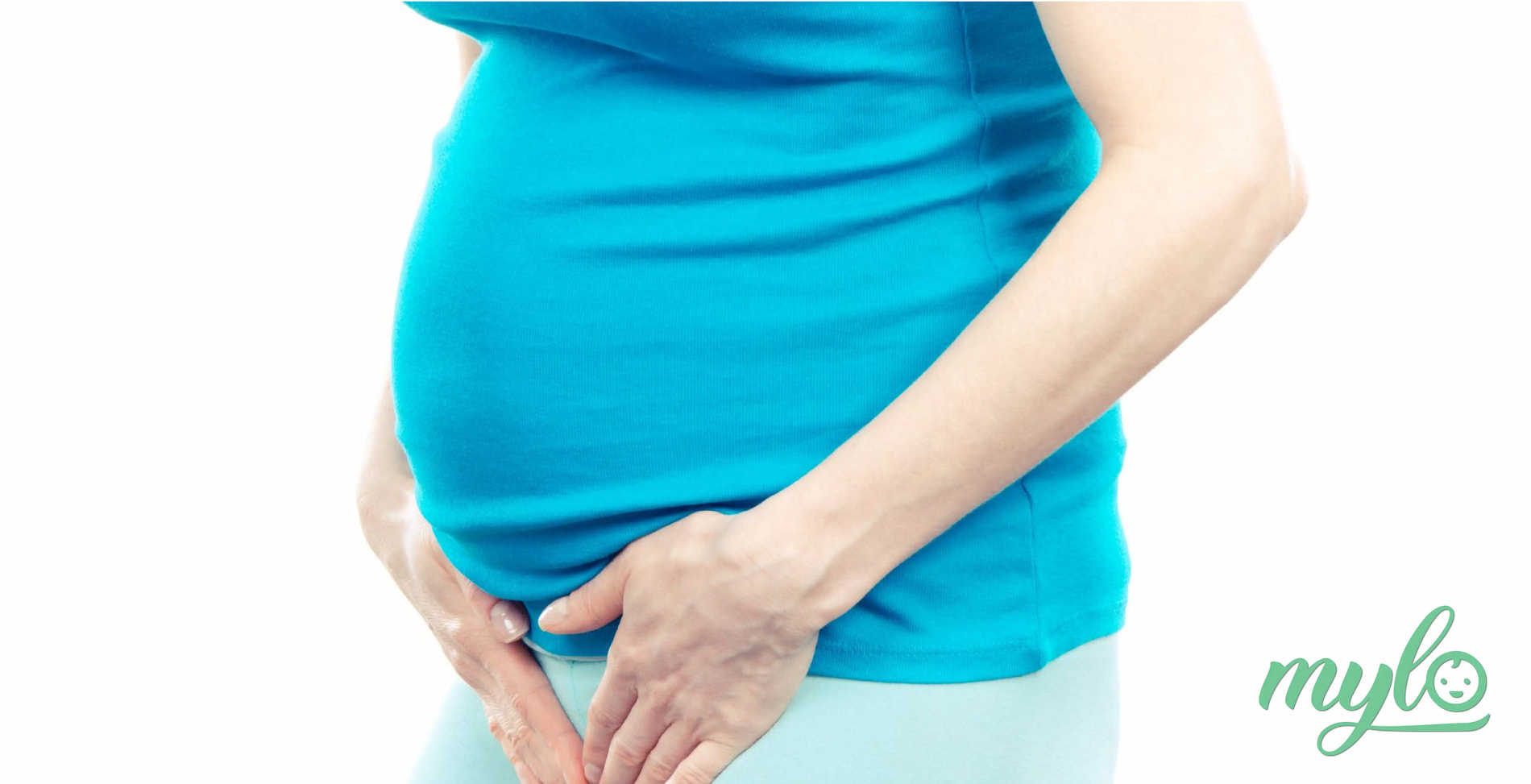Home

Urinary Tract Infection (UTI): Causes, Symptoms & Treatment
In this Article

Urinary Tract Infection (UTI): Causes, Symptoms & Treatment
Updated on 3 November 2023
Have you ever felt a burning sensation when you pee? Or had the urge to go to the bathroom all the time? Maybe you've even noticed a strong odor or cloudy appearance in your urine. If so, you might have experienced a urinary tract infection (UTI). UTIs are a common condition that affects millions of people every year, but they can be uncomfortable and even painful.
In this article, we'll explore the causes, symptoms, and treatments of UTIs, as well as some tips for prevention. So grab a cup of tea and let's dive in!
Symptoms of UTI
Here are some of the most common UTI symptoms female or symptoms of UTI in women:
- Abdominal pain/ cramps
- Shivering and fever
- Mucus or blood in the urine
- Burning sensation or pain when urinating
- Foul-smelling urine
- The frequent urge to pass urine
- Pain during sexual intercourse
- When bacteria spreads to the kidney, it causes back pain, nausea, and vomiting
- Either you’ll pass less urine or more
If you notice any of the above symptoms, it's important to consult a doctor and get a proper diagnosis in order for a proper treatment.
Symptoms of UTI According to the Parts that are Affected
Here are some of the most common symptoms of UTI in women according to the part affected:
1. Kidneys
If your kidneys are affected, then the condition is termed acute pyelonephritis. A few of the most common symptoms include the following:
- Back pain
- High fever as well as chills
- Nausea
- Continuous vomiting
2. Bladder
If the part of the urinary tract that is affected is your bladder, then the condition is termed cystitis. The common symptoms include:
- Pelvic pain
- Blood found in the urine
- Painful urination
- Lower abdominal pain
3. Urethra
If the part affected is your urethra, the condition is termed urethritis. One may experience various symptoms, such as a burning sensation and an unusual discharge when urinating.
Are UTIs Common in Pregnant Women?
During pregnancy, the urinary tract's anatomy changes. The ureters and bladder may be compressed when the uterus expands, causing the kidneys to enlarge. Pregnancy causes the bladder to be compressed, making it more difficult to empty. When you're pregnant, the hormones progesterone and estrogen increase, weakening your bladder and ureters. Because of the increased protein, hormone, and sugar content in your urine during pregnancy, the acidity in your urine is reduced. Bacteria thrive on abundant sugar. As a result, pregnant women are more likely to suffer from a urinary tract infection (UTI).
You may also like: How to Deal with UTIs During Pregnancy: Prevention, Treatments and Tips
What are the Causes of Urinary Tract Infection?
Here are five possible causes of UTIs:
1. Bowel bacteria
The primary cause of UTIs is the Escherichia coli (E. coli) bacteria, which are commonly found in the gastrointestinal tract and can easily travel to the urinary tract through the urethra.
2. Poor hygiene
Poor hygiene practices, such as not washing hands before and after using the bathroom or sexual activity, can increase the risk of UTIs.
3. Dehydration
Not drinking enough water can lead to concentrated urine, which can irritate the bladder and increase the likelihood of developing a UTI.
4. Sexual activity
Sexual activity can introduce bacteria into the urinary tract, making it more susceptible to infections.
5. Certain birth control methods
Certain birth control methods, such as diaphragms and spermicides, can increase the risk of UTIs by promoting bacterial growth.
6. Holding in urine
Holding in urine for long periods of time can increase the risk of UTIs by allowing bacteria to multiply in the bladder.
7. Pregnancy
UTIs are also common during pregnancy as the uterus expands and exerts increased pressure on the bladder. These bodily changes and increase in hormones, blood flow and sugar in the body can increase the risk of a UTI.
It's important to note that while these factors can increase the risk of developing a UTI, they are not always the direct cause. UTIs can also occur without any apparent cause. If you suspect you have a UTI, it's important to see a healthcare provider for proper diagnosis and treatment.
Common Risk Factors Specific to Women Having UTIs
Since UTIs are frequent in women belonging to all age groups, numerous risk factors are associated with this condition. Thus, this eventually makes a woman more vulnerable to UTIs. A few of the risk factors are listed below:
1. Shorter urethra
The female anatomy involves a comparatively shorter urethra than the male anatomy. Therefore, there is a shortened distance that the bacteria has to travel in order to infect various other parts of the tract. Besides, the vulnerability to urine infection during pregnancy is heightened.
2. Sexual activity
Women who are sexually active may turn out to be way more vulnerable to UTIs than women who aren’t active. Apart from that, having multiple sexual partners can also increase your risk of a UTI.
3. Birth control
Women who generally use birth control methods such as diaphragms are usually at a higher risk. Besides, if you have been using spermicidal agents as well, you may be more vulnerable to a urinary tract infection.
4. Menopause
During menopause, there is a decline in the levels of estrogen, which then leads to numerous changes in the female body. Thus, these changes may lead to a UTI.
5. Blockages
Various blockages in your urinary tract may trap urine in parts such as the bladder etc. Thus, yet again, this could result in a urinary tract infection. A few of the common examples include kidney stones as well as enlarged prostate.
6. Weak immune system
Various diseases such as diabetes can eventually weaken the immune system, thus affecting the system’s defence mechanism against germs. This can eventually lead to a UTI.
7. Catheter
A catheter is a tube most commonly used by people who are not able to urinate on their own. Since these people find it difficult, they may have an increased risk of urinary tract infections.
8. Recent procedure
If you have recently had urinary surgery, you may be at a higher risk of developing a UTI. This is because an exam of your tract involved various medical instruments that eventually contributed to the increased risk.
Complications of a UTI
If a UTI is treated early, one may not have to suffer severe consequences. However, if left untreated, a urinary tract infection may lead to unexpected complications. A few of the complications are listed below.
- You may experience repeated infections of the urinary tract. This is common in women who may suffer from a UTI three or more times in a 6-month span.
- One may have to suffer from chronic kidney damage due to pyelonephritis.
- Pregnant women may have an increased risk of UTI during pregnancy, and this may lead to complications such as the delivery of premature babies.
- If the infection travels up to your kidneys, all the way from the bladder, then you may have to suffer from a life-threatening risk of developing sepsis. This is one of the most dangerous complications of a urinary tract infection.
UTI and Sexual Activity
It is crucial for you to understand that a urinary tract infection is not sexually transmittable. In short, it is not contagious. However, there are numerous risk factors associated when having sex with a person who suffers from a urinary tract infection.
For example, for a female that is suffering from UTI, sex may turn out to be painful and may eventually lead to irritation of the urethra. In fact, applying too much pressure on the inner walls of the vagina may increase the pressure on the already sensitive bladder, thus increasing the pain.
Sex can increase the risk of developing a UTI but introduce harmful bacteria into the sensitive urethra. In fact, any form of genital contact can invite bacteria into the urethra, regardless of the use of a condom. Hence, it is a recommendation that you avoid all kinds of sexual activities until the UTI symptoms are relieved.
Tips to Manage UTI at Home
Here are some home remedies that you can try to manage a urinary tract infection:
- To flush out all the bacteria from your body, you should drink lots of water and other fluids like coconut water, buttermilk, fresh fruit juice, flavored milk, and lemonade.
- If you are holding the urine for a longer time, then the bacteria multiply faster and will harm your kidneys. So, make sure to pee often.
- Intake of probiotics will help in restoring healthy bacteria in your body. For example- yogurt and raw cheese.
- Drinking unsweetened cranberry juice will help prevent the bacteria from entering the body. It is also used as a defense for the body as it will stop the growth of bacteria.
- You must increase your intake of vitamin C. Fresh fruits and vegetables like- kiwi, bell peppers, orange, and lemon are some of the foods rich in vitamin C.
- Cut sugar, refined foods, canned juices, alcohol, and caffeine from your diet.
- Take vitamin C, zinc, and beta carotene supplements with your doctor’s consultation.
- Avoid having physical relationships with your spouse if you are being treated for a UTI.
- Whenever you urinate, make sure you empty your bladder fully.
- Change your underwear and take a shower daily.
- Keep your washrooms clean and tidy and avoid using public washrooms.
- Avoid wearing tight-fitting clothes and wear loose-fitted breathable garments.
- Avoid using feminine hygiene products like- powder, deodorants, strong soaps, antiseptic creams, etc.
- Always wear cotton and hypoallergenic underwear that is comfortable and feels good on your body.
You may also like: Cranberry Juice For Urine Infection: Myths & Tips
Foods to Consume to Recover Faster from a UTI
Although one may require medical attention to treat a urinary tract infection, you can consider consuming a few of these power-packed foods to help you recover quickly! A few of the foods listed below can help relieve urine infection symptoms in women:
1. Berries
Cranberries, raspberries as well as blueberries can help you recover from a urinary tract infection. This is because they contain substances like proanthocyanidin that prevent the growth of infection-causing organisms residing on the urinary tract lining.
2. High fiber foods
Consider consuming foods such as bananas, nuts as well as oats because these can help in removing harmful bacteria residing in your urinary tract. Apart from that, they can also help in regulating your bowel movements, eventually relieving some pressure off the bladder.
3. Salmon
Omega-3 fatty acids from cold-water fish can indeed prevent inflammation caused due to a UTI. However, if you are a vegetarian, you can consider consuming fish oil supplements as well. Yet again, it is crucial that you seek your doctor before adding anything to your diet.
Conclusion
In conclusion, urinary tract infections are a common health issue that affects millions of people every year. They are caused by bacteria and can affect different parts of the urinary system. Symptoms of UTIs include pain during urination, frequent urination, and cloudy or foul-smelling urine. Treatment for UTIs usually involves antibiotics and pain relievers. However, it is important to practice good hygiene habits and stay hydrated to prevent UTIs.
References
1. Tan CW, Chlebicki MP. (2016). Urinary tract infections in adults. Singapore Med Jorunal
2. Abou Heidar NF, Degheili JA, Yacoubian AA, Khauli RB. (2019). Management of urinary tract infection in women: A practical approach for everyday practice. Urol Ann.



Written by
Parul Sachdeva
A globetrotter and a blogger by passion, Parul loves writing content. She has done M.Phil. in Journalism and Mass Communication and worked for more than 25 clients across Globe with a 100% job success rate. She has been associated with websites pertaining to parenting, travel, food, health & fitness and has also created SEO rich content for a variety of topics.
Read MoreGet baby's diet chart, and growth tips

RECENTLY PUBLISHED ARTICLES
our most recent articles

Diet & Nutrition
গর্ভাবস্থায় আলুবোখরা: উপকারিতা ও ঝুঁকি | Prunes During Pregnancy: Benefits & Risks in Bengali

Diet & Nutrition
গর্ভাবস্থায় হিং | ঝুঁকি, সুবিধা এবং অন্যান্য চিকিৎসা | Hing During Pregnancy | Risks, Benefits & Other Treatments in Bengali

Women Specific Issues
স্তনের উপর সাদা দাগ: লক্ষণ, কারণ এবং চিকিৎসা | White Spots on Nipple: Causes, Symptoms, and Treatments in Bengali

Diet & Nutrition
গর্ভাবস্থায় পোহা: উপকারিতা, ধরণ এবং রেসিপি | Poha During Pregnancy: Benefits, Types & Recipes in Bengali

Diet & Nutrition
গর্ভাবস্থায় মাছ: উপকারিতা এবং ঝুঁকি | Fish In Pregnancy: Benefits and Risks in Bengali

Diet & Nutrition
গর্ভাবস্থায় রেড ওয়াইন: পার্শ্ব প্রতিক্রিয়া এবং নির্দেশিকা | Red Wine During Pregnancy: Side Effects & Guidelines in Bengali
- ইনার থাই চ্যাফিং: কারণ, উপসর্গ এবং চিকিৎসা | Inner Thigh Chafing: Causes, Symptoms & Treatment in Bengali
- গর্ভাবস্থায় ব্রাউন রাইস: উপকারিতা ও সতর্কতা | Brown Rice During Pregnancy: Benefits & Precautions in Bengali
- Velamentous Cord Insertion - Precautions, Results & Safety
- Unlock the Secret to Flawless Skin: 7 Must-Have Qualities in a Face Serum
- Unlock the Secret to Radiant Skin: How Vitamin C Serum Can Transform Your Complexion
- Gender No Bar: 10 Reasons Why Everyone Needs a Body Lotion
- Unlock the Secret to Radiant Skin How to Choose the Perfect Body Lotion for Your Skin Type
- Top 10 Reasons to Apply a Body Lotion After Every Bath
- Communication in Toddlers: Milestones & Activities
- How to Improve Vocabulary for Toddlers?
- A Comprehensive Guide to Understanding Placenta Accreta
- Vulvovaginitis in Toddlers Causes, Symptoms and Treatment
- A Comprehensive Guide to Understanding Cerebral Palsy in Children
- Bitter Taste in Mouth During Pregnancy: Understanding the Causes and Remedies


AWARDS AND RECOGNITION

Mylo wins Forbes D2C Disruptor award

Mylo wins The Economic Times Promising Brands 2022
AS SEEN IN
















- Mylo Care: Effective and science-backed personal care and wellness solutions for a joyful you.
- Mylo Baby: Science-backed, gentle and effective personal care & hygiene range for your little one.
- Mylo Community: Trusted and empathetic community of 10mn+ parents and experts.
Product Categories
baby carrier | baby soap | baby wipes | stretch marks cream | baby cream | baby shampoo | baby massage oil | baby hair oil | stretch marks oil | baby body wash | baby powder | baby lotion | diaper rash cream | newborn diapers | teether | baby kajal | baby diapers | cloth diapers |








